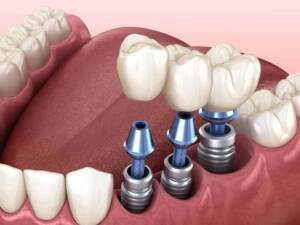Maintaining a bright and healthy smile is a priority for many of us. Dental procedures like scale and polish are often considered for maintaining oral hygiene, but can they also help in whitening your teeth? In this informative article, we will delve into the world of dental scale and polish treatments, explore what they can and cannot do for the color of your teeth, and provide clarity on this common dental query.
The Basics of Scale and Polish
What Is a Scale and Polish?
A scale and polish is a standard dental procedure performed by dental hygienists or dentists. It involves two essential steps:
- Scaling: During this phase, the dental professional uses special instruments to remove plaque and tartar buildup from your teeth. This step is crucial for preventing gum disease and maintaining healthy teeth.
- Polishing: After scaling, your teeth are polished to remove surface stains and create a smoother surface. This step can leave your teeth looking cleaner and brighter.
Can a Scale and Polish Whiten Your Teeth?
The Reality of Teeth Whitening
While a scale and polish can improve the appearance of your teeth by removing surface stains, it is not a teeth whitening procedure in the traditional sense. Teeth whitening treatments involve using specialized whitening agents to bleach the inner structure of your teeth, changing their color. A scale and polish, on the other hand, primarily addresses external factors like plaque, tartar, and surface stains.
Factors That Impact Teeth Color
1. Diet
What you eat and drink can influence the color of your teeth. Foods and beverages like coffee, tea, red wine, and certain fruits can lead to staining over time.
2. Smoking
Tobacco products contain substances that can stain teeth. Smoking is a known contributor to tooth discoloration.
3. Oral Hygiene
Maintaining good oral hygiene through regular brushing and flossing can prevent surface stains and maintain a brighter smile.
4. Aging
As we age, the outer layer of enamel on our teeth naturally wears down, revealing the yellowish dentin underneath. This can lead to the appearance of duller teeth.
Teeth Whitening vs. Scale and Polish
Teeth Whitening
- Involves bleaching the inner structure of teeth.
- Addresses intrinsic (internal) stains.
- Results in a more significant change in tooth color.
- Typically requires professional treatment or at-home kits.
Scale and Polish
- Focuses on removing external factors like plaque and tartar.
- Addresses extrinsic (surface) stains.
- Provides a cleaner and brighter appearance but not dramatic whitening.
- Part of routine dental care.
Conclusion
In conclusion, a scale and polish are essential dental procedures that play a significant role in maintaining good oral health and improving the appearance of your teeth. However, they should not be confused with teeth whitening treatments.
A scale and polish primarily address surface stains and the removal of plaque and tartar, resulting in cleaner and brighter teeth. If you’re looking for a more significant change in tooth color, teeth whitening treatments specifically designed for that purpose are your best option.
To maintain a bright and healthy smile, it’s crucial to combine regular dental check-ups and cleanings (including scale and polish) with good oral hygiene practices and, if desired, professional teeth whitening treatments from GKDental Hawick NHS Family Dental Practice





